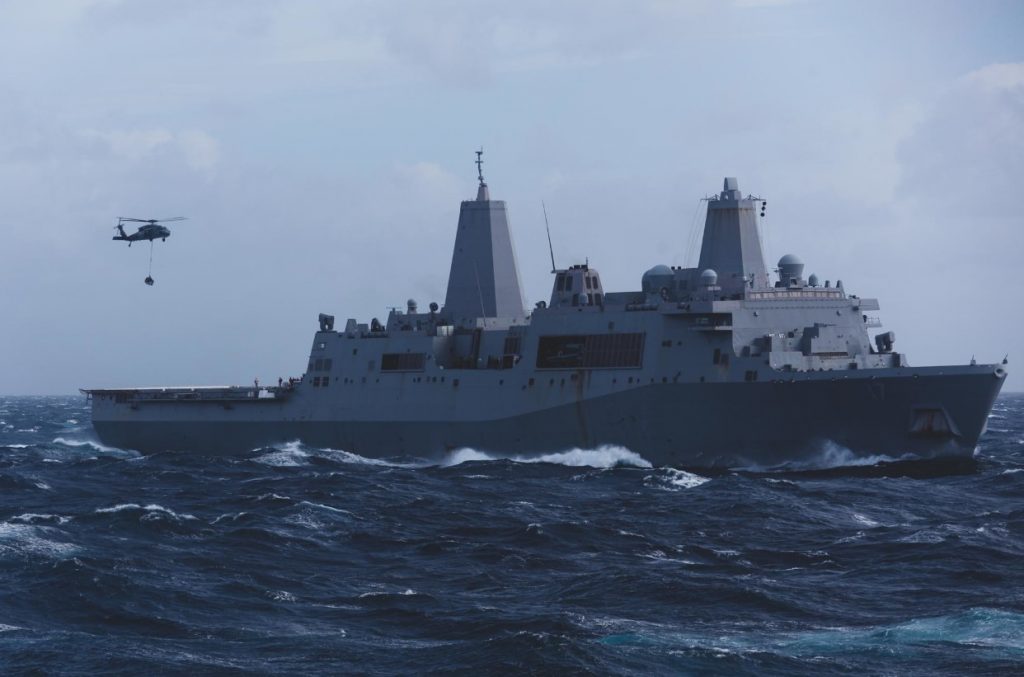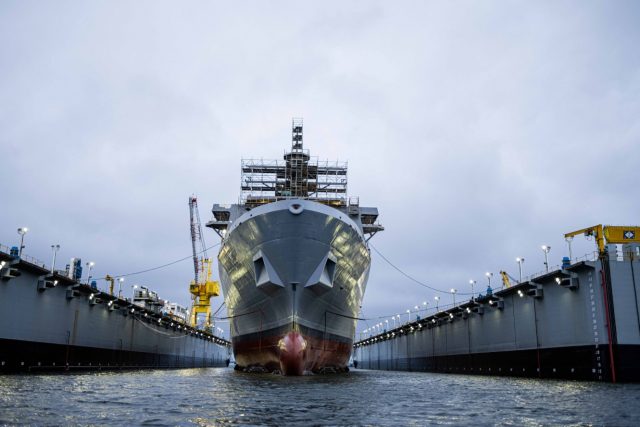US shipbuilder Huntington Ingalls Industries has launched the 13th San Antonio-class landing platform dock for the US Navy.
Future USS Richard M. McCool Jr. (LPD 29) is also the final Flight I ship in its class, with work already underway on the Flight II hulls that will be more affordable ships with reduced capabilities.
It is worth noting that similarly to USS Fort Lauderdale (LPD-28), LPD 29 is a “transitional ship,” already incorporating design features of the Flight II vessels with a more traditional mast being one of the more distinctive features.
With the assistance of tugs, Richard M. McCool Jr. came off the floating dry dock Wednesday morning, after first being translated via Ingalls’ rail car system. The dock was moved away from the pier and then ballasted to float off the ship.
Launching Richard M. McCool Jr. is the first of a series of significant milestone events in bringing the ship to life, and eventual delivery to the US Navy, which is planned for later next year.
“The LPD class ships, like all of our programs, are critically important to US national security,” said Kari Wilkinson, president of HII’s Ingalls Shipbuilding division. “In addition, thousands of Americans, from engineers to electricians, have worked on LPD 29 over the years. Ingalls Shipbuilding is proud to build them and even more proud of the talented people that make up our shipbuilding team.”

The LPD 17 San Antonio class is the functional replacement for over 41 ships including the LPD 4 Austin class, LSD 36 Anchorage class, LKA 113 Charleston class, and LST 1179 Newport class amphibious ships.
The newly designated LPD Flight II ships (formerly LX(R)) will be the functional replacement for the LSD 41/49 Whidbey Island-class.
The 684-foot-long, 105-foot-wide Flight I ships displace 25,000 tons and are used to embark and land Marines, their equipment and supplies ashore via air cushion or conventional landing craft and amphibious assault vehicles, augmented by helicopters or vertical takeoff and landing aircraft such as the MV-22 Osprey.
The San Antonio-class has a ship’s company of 383 sailors and three marines, along with an embarked landing force of 699 troops, with surge capacity of 800.
The follow-on Flight II ships will have a more traditional mast in place of the two advanced enclosed mast/sensors and an updated deckhouse and boat valley design. The ships will carry fewer troops, up to 631 according to the navy, and have slightly less vehicle stowage space but still have greater capacity than the legacy Whidbey Island-class they are replacing.



























